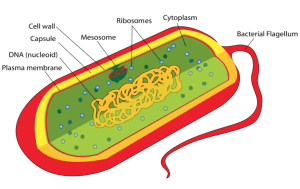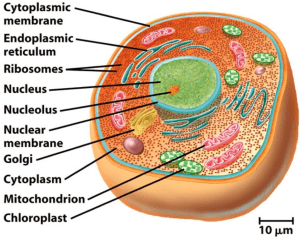Introduction
In this section, we delve into the fascinating components of a cell that help it function effectively. A cell is composed of subcomponents or organelles, each performing a different job. Understanding the structure and function of these organelles will help you appreciate the complexity and efficiency of even the smallest living organisms.
Plasma Membrane
The plasma membrane is arguably one of the most important components of a cell. It is made up of a phospholipid bilayer, which means that the membrane consists of two lipid layers. The phospholipids have two specific properties: the head is hydrophilic, meaning it likes water, while the tail is hydrophobic, meaning it avoids water. The membrane is arranged in such a way that the heads point towards the inside and outside of the cell, while the hydrophobic tails are nested between them.
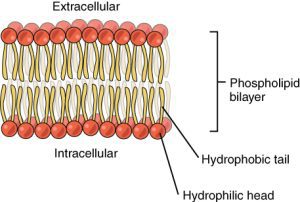
The plasma membrane is known as the fluid mosaic model, indicating that it is very flexible. It is made up of various proteins along the membrane, and these proteins act as transporters for molecules that cannot move through the hydrophobic tails. The plasma membrane plays a key role in maintaining the integrity of the cell and regulating the movement of substances in and out of the cell.
Nucleus
The nucleus is the largest organelle in the cell and acts as the cell’s control center. It contains the genetic material (DNA) and directs all cellular activities, including growth, metabolism, and reproduction. The nucleolus, found within the nucleus, is responsible for assembling ribosomes, which are essential for protein synthesis.
Ribosomes
Ribosomes are composed primarily of ribosomal RNA (rRNA) and are the sites of protein synthesis. There are two kinds of ribosomes found in cells: free ribosomes and bound ribosomes. Free ribosomes are located in the cytosol and produce proteins that remain within the cell, while bound ribosomes are attached to the rough endoplasmic reticulum (ER) and mainly produce proteins for export out of the cell.
Endoplasmic Reticulum (ER)
The endoplasmic reticulum is made up of two parts: the smooth ER and the rough ER. The smooth ER performs various functions such as lipid synthesis, carbohydrate metabolism, detoxification of drugs and poisons, and calcium ion storage. The rough ER, which has ribosomes attached to its surface, plays a key role in protein synthesis. Once the proteins are synthesized, they are moved to the transitional ER, where they are wrapped in transport vesicles and sent to the Golgi apparatus for further processing.
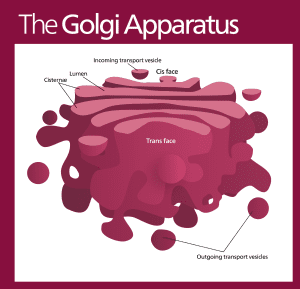
Golgi Apparatus
The Golgi apparatus modifies, stores, and transports proteins received from the rough ER. The Golgi consists of flattened membrane sacs known as cisternae, and it has two distinct sides: the cis face and the trans face. The cis face receives vesicles, while the trans face is responsible for shipping the modified proteins to their final destinations. The Golgi also plays a role in the production of lysosomes.
Mitochondria
Mitochondria are double-membrane organelles responsible for producing ATP, the energy currency of the cell, via cellular respiration. The outer membrane is smooth, while the inner membrane is folded into cristae, which increase the surface area available for ATP production. The mitochondrial matrix, located inside the inner membrane, is the site of the Krebs cycle. Mitochondria also contain their own circular DNA, which suggests that they were once independent organisms that formed a symbiotic relationship with eukaryotic cells.
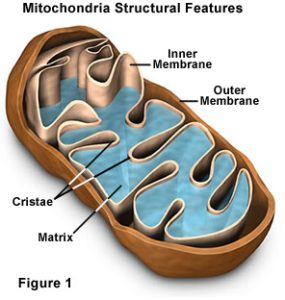
Lysosomes
Lysosomes are membrane-bound organelles that contain hydrolytic enzymes, which are used to break down macromolecules, old organelles, and other cellular debris. The acidic environment within lysosomes allows the enzymes to function effectively. Lysosomes are also involved in apoptosis, or programmed cell death, which is essential for maintaining cellular health.
Vacuoles
Vacuoles are large vesicles that store various substances such as food, water, and ions. Many unicellular eukaryotes have contractile vacuoles that pump excess water out of the cell. Plant cells typically have a large central vacuole that stores water and helps maintain turgor pressure, which is important for maintaining cell structure.
Chloroplasts
Chloroplasts are the organelles responsible for photosynthesis in plant cells and some algae. They have a double membrane and contain the pigment chlorophyll, which absorbs light energy. Chloroplasts are made up of the stroma, which is the liquid filling of the chloroplast, and thylakoids, which are flat membrane sacs that play a crucial role in light absorption.
Centrioles
Centrioles are cylindrical structures found in animal cells and are active during cell division. They produce microtubules that help pull apart chromosomes during mitosis. Plant cells do not have centrioles, but animal cells do, making it a key difference between the two types of cells.
Plant Cells vs. Animal Cells
Plant cells and animal cells share many similarities, but they also have distinct differences. Plant cells have a cell wall made of cellulose, which provides structural support. Animal cells lack a cell wall but have centrioles, which are involved in cell division. Prokaryotic cells, on the other hand, lack a nucleus and other membrane-bound organelles, making them simpler than eukaryotic cells.
| Prokaryote 🧫 | Plant Cell 🌼 | Animal Cell 🐄 | |
|---|---|---|---|
| Cell wall | ✅ | ✅ | ❌ |
| Plasma membrane | ✅ | ✅ | ✅ |
| Nucleus | ❌ | ✅ | ✅ |
| Centrioles | ❌ | ❌ | ✅ |
| Ribosomes | ✅ | ✅ | ✅ |
Prokaryotic cells do not have complex organelles such as lysosomes or the Golgi apparatus. They are essentially simpler cells, often consisting only of a flagellum, DNA, and ribosomes.
Quick Quiz: Eukaryotic vs. Prokaryotic Cells
Take a look at cell images and identify which are eukaryotic and which are prokaryotic. Remember the key components that differentiate them: eukaryotic cells have a nucleus and membrane-bound organelles, while prokaryotic cells do not.
Conclusion Understanding the structure and function of cell organelles is fundamental to grasping how cells work and how they contribute to the larger functions of living organisms. Each organelle plays a vital role in maintaining cellular health and ensuring that life processes run smoothly.
